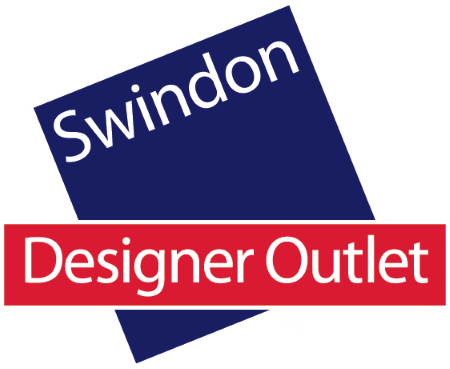In case you missed it see what’s in this section
Let's Talk
Expanding into New Markets: Evaluating Opportunities and Mitigating Risks
Expanding into new markets can be an attractive growth opportunity for many businesses, but it also comes with risks. Carefully evaluating the opportunities and developing strategies to mitigate the risks is key for success when entering new markets, whether domestically or internationally. This article will explore best practices for assessing and preparing for expansion.
Conducting Market Research
Before deciding to expand, extensive market research should be conducted to evaluate the opportunity. This includes analysing the potential market size and growth forecasts, competition, regulatory and legal considerations, cultural differences, and challenges to entering the market. Both qualitative and quantitative data from sources like industry reports, customer surveys, focus groups, and interviews with local experts should be gathered. Market research will provide the critical information needed to determine if expansion is viable and develop an effective strategy.
Performing a SWOT Analysis
A SWOT analysis template is an essential strategic planning tool when evaluating a new market opportunity. The SWOT methodology assesses the strengths, weaknesses, opportunities, and threats involved with the potential expansion.
Strengths and weaknesses represent internal factors under a company’s control. The strengths section should capture capabilities that can be leveraged for competitive advantage in the new market. Weaknesses are shortcomings that need to be addressed.
Opportunities and threats relate to external factors in the new market’s environment. Opportunities represent areas for growth and demand that can be capitalised on. Threats are potential obstacles like regulatory requirements, cultural barriers, or competitive rivalry that need to be overcome or mitigated.
The insights from a SWOT analysis help determine if the opportunity is a good strategic fit and inform strategies to maximise opportunities while minimising weaknesses and threats.
Developing a Market Entry Strategy
Once the opportunity is validated, the next step is developing an execution plan to enter the new market successfully. Key elements of the market entry strategy include:
- Product Offering – The product or service may need to be adapted to meet different customer needs, preferences, or local regulations in the new market.
- Pricing Strategy – Pricing may need to be adjusted based on economic conditions, competitive pricing, and customer willingness to pay in the new market. Local purchase power must be considered.
- Distribution Channels – The right distribution channels like retailers, resellers, or direct sales need to be established to effectively reach customers. This may require setting up new distribution relationships and networks.
- Promotional Strategy – Marketing messaging and campaigns must be adapted for the new market. This can include translating materials into the local language and aligning promotions with local culture.
- Partnerships – Strategic partnerships with local firms can accelerate market entry and growth by leveraging their market knowledge, distribution networks, and government relationships.
- Due Diligence – Conducting legal, financial, operational, and risk due diligence is necessary to avoid costly mistakes and identify required resources. Regulatory considerations are also critical.
- Localisation – Operations, processes, and human capital need to be structured to meet local norms and regulations. Hiring local staff and managers is often an important component.
- Infrastructure Investment – New facilities, IT infrastructure, supply chain logistics, and other capabilities may need to be established to support local operations.
- Testing and Iteration – Many companies start with a small pilot launch to test assumptions and learn before committing full resources. Starting slow allows testing and iteration.
Securing Funding
Expanding into a new market can require significant upfront investment, not just for physical assets but also for things like international SEO services, so securing funding is crucial. Self-funding from cash reserves is one approach, but external funding may be necessary. Equity financing from investors or venture capital can provide growth capital to fund expansion. Debt financing through bank loans is another option. Partnership funding through strategic alliances is also possible. Many financing options can be explored to fund growth ambitions.
Managing Risks
While expanding provides tangible opportunities, it also carries elevated risks that must be managed. Some key risks when entering new markets include:
- Market Acceptance – Failure to gain traction and adoption in the new market is a risk if the targeted customer segments do not sufficiently value the company’s offerings. Careful market research mitigates this.
- Regulations – Complex regulatory environments create compliance risks. Partnering with local experts provides guidance.
- Political Instability – Entering markets with unstable political or economic climates is risky. This should be evaluated thoroughly.
- Currency Fluctuations - Currency exchange fluctuations can impact profit margins. Currency hedging strategies may be prudent.
- Supply Chain Disruption – Global supply chains face more potential disruptions. Developing local supply capabilities may be beneficial.
- Cultural Barriers – Failure to understand cultural nuances can impede market penetration. Deep immersion into the local market and culture is important.
- Competitive Threats – Entrenched competitors in the market or low barriers to entry heighten competition. Compelling differentiation is key.
- Macro Risks – Forces like inflation, war, or pandemics can disrupt global plans. Markets with lower vulnerability are preferred.
Mitigating risks requires contingency planning for best-case and worst-case scenarios, securing insurance policies where feasible, and maintaining financial reserves.
With appropriate diligence and preparation for the diverse challenges of entering new markets, both domestically and globally, companies can prudently pursue growth opportunities that propel the business forward.
Weather in Swindon
Listings





















